China today: Where ancient meets futuristic
Fabled cities, phenomenal landscapes, fascinating flora and fauna, fantastic food, fabulous fashion finds, funny moments, and, most importantly, friendship.
That sums up the nine days I recently spent in the cities of Chengdu, Jiuzhaigou, Chongqing, Huaihua, and Zhangjiajie in the provinces of Sichuan and Hunan in China. Those action-packed days barely scratched the surface of a land filled with incredible natural beauty, welcoming people and over-the-moon technology.
The stylish, indefatigable, and learned former Senator Nikki Coseteng arranged for this cultural tour with the generous support of Ambassador Carlos Chan, the Filipino Chinese Associations of the Philippines Inc. and the Filipino Chinese Friendship Association. Thirty-nine of us embarked on this adventure, with ages ranging from 14 to 76, and professions in education, media, architecture, medicine, engineering, urban development, and business. There were high school and college students in the group. We were here to see for ourselves today’s China and draw our own conclusions amid the negative rhetoric always hurled at this country.
There were no toilets back then, I would bring toilet paper, soap, chocolates and chewing gum to give away to kids,’ says Nikki Coseteng who has visited China over 50 times. Her grandfather was the first mayor of Xiamen.
Though mostly strangers to each other at first, our group became fast friends as we hurdled tight schedules, harrowing bullet train boarding times, and our physical limitations. We delighted in the stupendous topography of the land with its majestic mountains, lakes, and waterfalls. We were enchanted by the juxtaposition of the ancient and the futuristic that we came across everywhere. Our motley group helped each other, laughed at our many bloopers and misadventures, and came away from the trip, thoughtful and changed.
“I want to introduce you to the China I know today,” said former Senator Nikki Coseteng at an orientation dinner prior to our trip. The granddaughter of the first mayor of Xiamen, Nikki has witnessed the tremendous changes in China in over 50 visits to that country beginning in the ‘80s.
“There were no toilets back then. I would bring four maletas full of Lifebuoy soap, toilet paper, sanitary napkins, spaghetti sauce and cooking oil, things like that to give to our friends and relatives there,” she recalls. "I also brought chocolates and chewing gum for the kids. Now, these same kids fetch us in Porsche Cayennes, BMWs and Range Rovers."
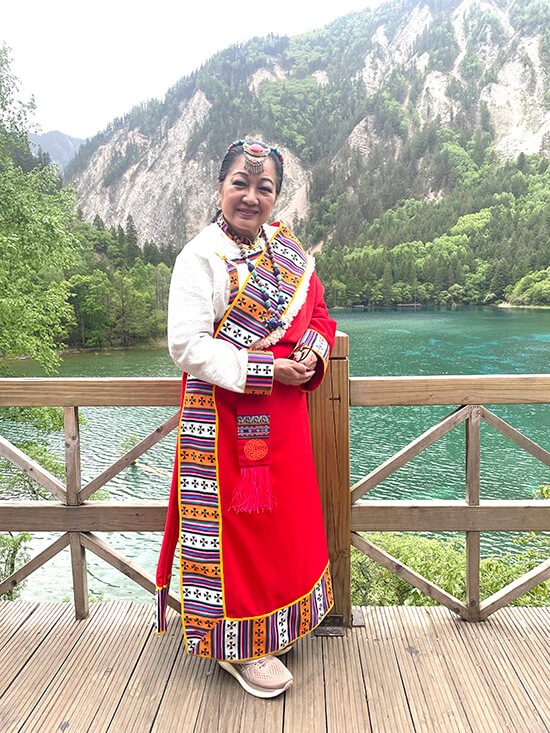
“I used to be able to find my own way to the county my grandfather lived. But there is so much new development each time I return that now, I can no longer locate our home on my own,” Nikki discloses. “To me, from 1989 to a few years ago is not very long. But you can just imagine the dramatic rise that China has gone through and that kind of quality of life that they have created for one billion 400 million people. That’s totally amazing. In any time at any point of history and in any other place, this has never happened.”
Prior to the trip, I made a quick study of the history of China spanning thousands of years, marveling that no other civilization on the planet has lasted this long. From the rise and fall of dynasties and kingdoms, through famines and natural calamities, to civil wars and invasions, the devastations of world wars, and the clash of ideologies, China has literally risen from the ashes time and time again. Terrible leaders brought hardship to the people while the good ones led them through prosperous times where great technological advances were made. Gunpowder and weaponry made them skillful in war, as did the military prowess of able generals.
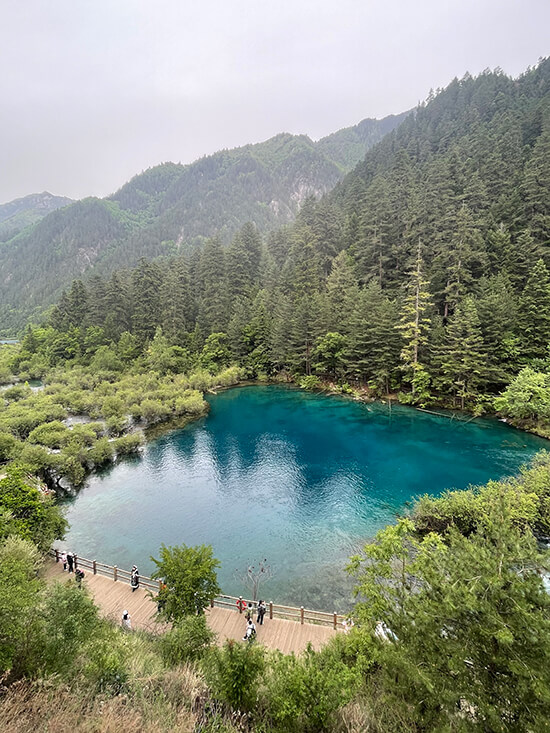
The humiliations suffered at the hands of western countries, which included opium addiction and being forced to open their ports to trade, produced in the Chinese a collective resolve to never allow these things to happen again. As a result of the changing tides the Chinese experienced through the centuries, they have developed true grit.
We saw this grit translated into today’s ultra-modern cities in provincial settings. I have personally been to both east and west coasts in the US and many countries in Europe and Asia, but I can’t compare China to any of them as it is a class act all its own. Silk, porcelain, tea, herbal medicines, gold, jade, and silver jewelry are just the tip of their exemplary crafts and the products. Today, their manufacturing abilities are unmatched.
The China experience
We began what was dubbed the maiden voyage of “The China Experience” in Chengdu, the capital of Sichuan province with a population of more than 21 million. For a provincial city, it has a very large and efficient airport which served as a harbinger of things to come. The drive into the city was smooth, the streets of the city itself were clean and lined with trees, shops, and buildings that made me think of a green and sprawling Hong Kong.

We stayed briefly in Chengdu, only having enough time for a full Chinese breakfast buffet and to visit Taikoo Li, which is the city center. The breakfast was our introduction to the kind of Chinese food we would have throughout the trip, which was Sichuan cuisine. There were always delicious warming soups, often with local mushrooms; plenty of vegetable dishes with emphasis on Chinese cabbage, braised eggplant, refreshing cucumber, yummy fried corn kernels, stir-fried cauliflower, to mention only a few. Sichuan meals are laced with heat and spice, balanced with breads and noodles. They like melons for dessert—refreshing watermelon, cantaloupe, and crisp honeydew.

I would describe Taikoo Li as the Ginza of Chengdu where large outposts of luxury brands, like Gucci, Louis Vuitton, Armani, Prada, and Dior, line the street, as do upscale malls like IFS where one can find not just high-end stores from other countries but also chic, top-of-the-line local brands like Aw Project, Coven Garden, BeA, and Marisfrolg.
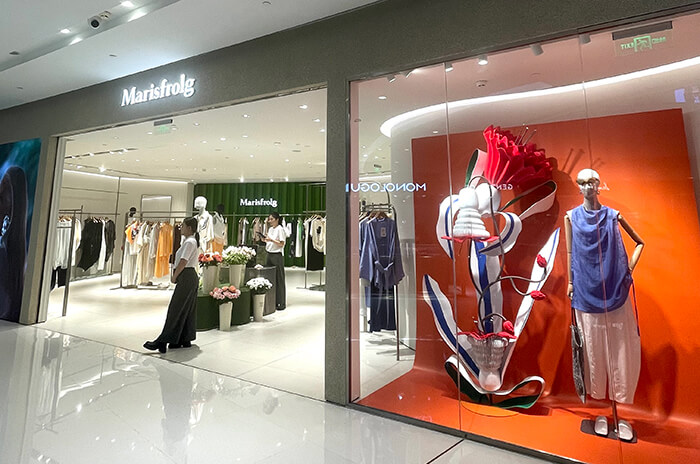
Adjacent to pricey Taikoo Li is Chunxi Road, an area with many department stores and fashionable boutiques with very affordable prices. The styles, materials and workmanship are excellent for pieces that go from 199 yuan and up. With an exchange rate of P8 to 1 yuan, the fashionistas in the group went on a shopping spree (including me).
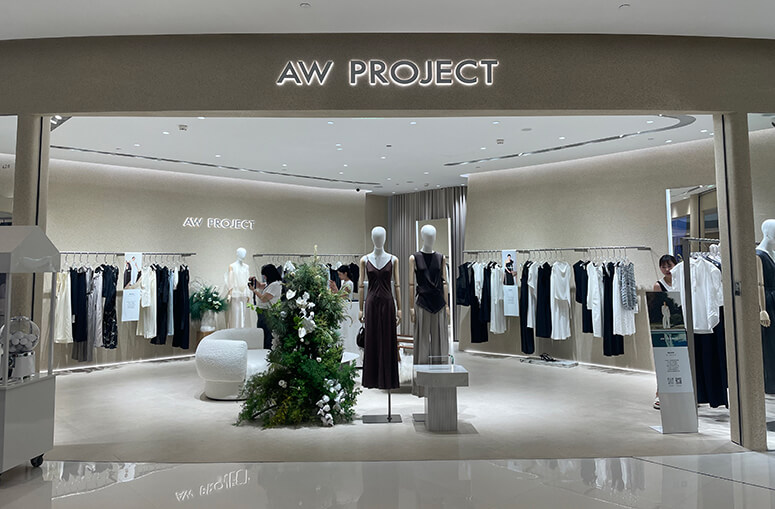
You can also find a variety of interesting snacks and street food all over Chunxi, plus toy stores, tea shops, coffee shops where you can while away the time watching the stylish Chinese shoppers saunter by. Chengdu is known for its leisurely pace, and is much more laidback than the big cities like Beijing and Shanghai.
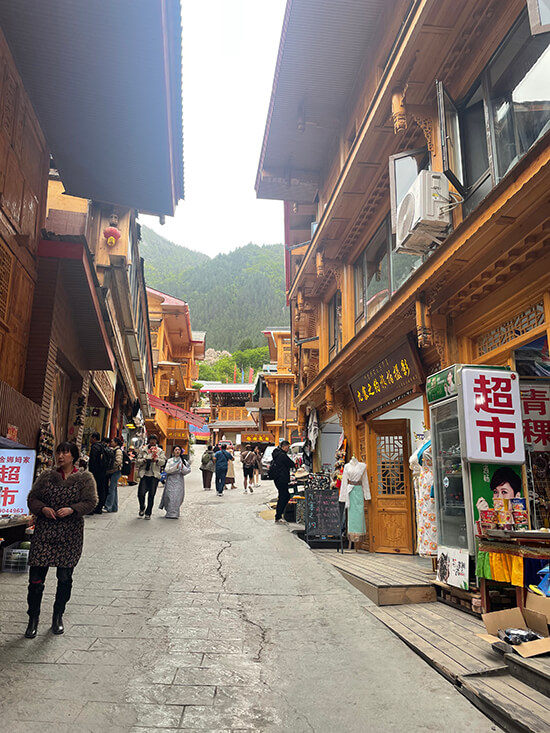
But Chengdu’s ancient sites, including Jinli and its famous panda base, had to wait as we caught a bullet train for Jouzhaigou, located on the eastern part of the Qinhai-Tibet plateau. This was our introduction to the challenge of boarding and exiting a bullet train within five minutes, given the size of our group and the number of senior citizens. We learned to line up and make a dash with our luggage as soon as the gates opened, with everyone helping each other.

An hour and a half later, we emerged from the train into chilly weather and surroundings that had a different atmosphere. That was because the architecture, shops and restaurants, woven items, Buddhist temples, prayer flags, and stupas (prayer mounds) made it clear that the inhabitants of this region were Tibetan.
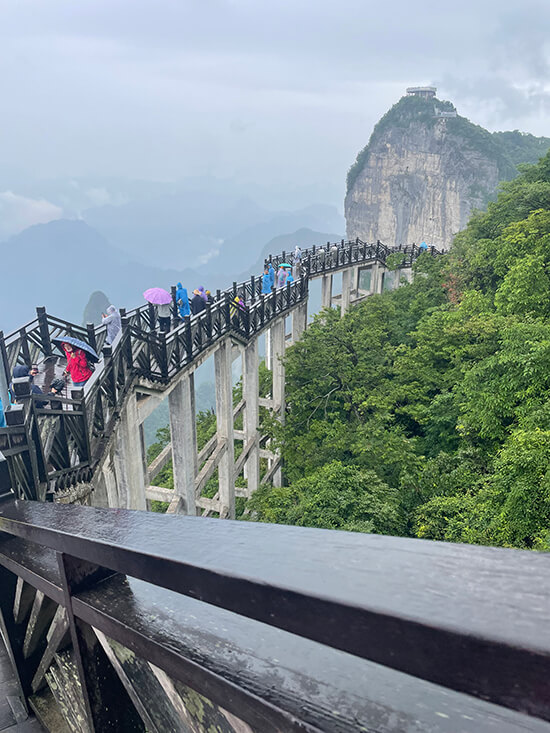
The goal of anyone headed to Jiuzhaigou (which sounds like “ja-jay-go”) is the 72,000-hectare national park that is home to glorious mountains covered with thick forests of what look like Christmas trees, with many turquoise-colored lakes, waterfalls and rushing streams. This Unesco World Heritage and World Biosphere Reserve rises 2,400 meters above sea level. From the entrance, free shuttle buses take you around the many lakes that mirror the snow-capped mountains and forests. Beneath those strangely blue lakes, caused by high levels of calcium carbonite, you see a forest of fallen, petrified trees.
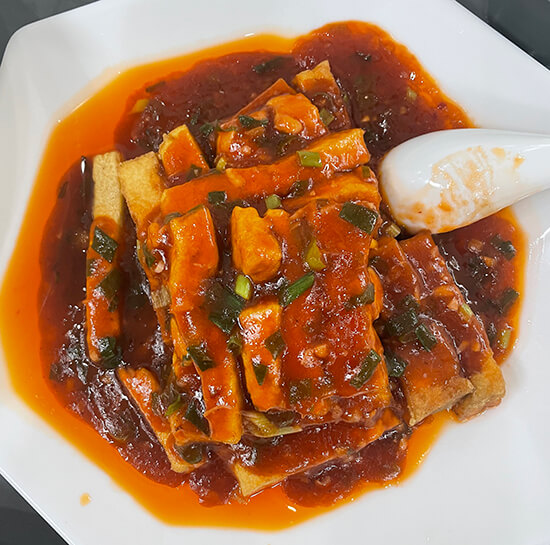
We started off from the Nuorilang Waterfall which is China’s widest highland waterfall, and the quietly beautiful Pearl Shoal where water gently flows over a slope of rock, plants, and flowers that is 112 meters wide and 189 long. Wooden viewing platforms allow you to cross the shoal to get to the waterfalls, a long curtain of water punctuated by rock formations.
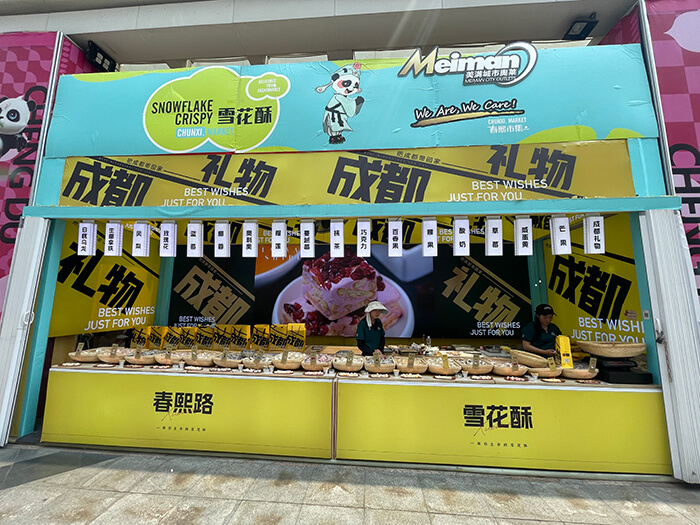
There is Mirror Lake, though all the lakes act as mirrors, Tiger Lake (yes, there used to be tigers roaming here), and so many more that you need at least two full days to explore them all. Some locals come and stay for a week, and I see why. There is the roaring yet soothing sound of water everywhere, and your hungry soul drinks up all the views. The wooden pathways are so thoughtfully placed to give you wonderful vantage points. The many local visitors do not detract from the serenity and the deep peace that descends upon you. There are paths that lead into the woods away from the crowds, and on these I can only thank the God of wonders who created this incredible beauty. My soul feels tranquil and renewed, healed of any brokenness and sorrow.
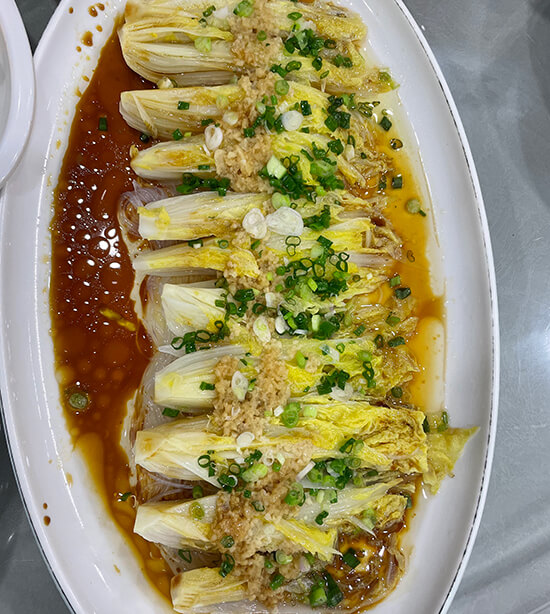
It is with a resolve to return that we left Jiuzhaigou (the “valley of nine villages”) to board two consecutive bullet trains to take us to our next destination, Chongqing. I had eagerly anticipated visiting this provincial level municipality of 32 million whose total land area is bigger than that of the Philippines. Yet as elsewhere in these provinces, the land is spacious and you never feel crowded.

Unique City
Chongqing’s topography of being a valley surrounded by mountains leads to a unique city of structures built on both the floor and the slopes so that you have buildings and structures of various heights. This leads to the bizarre experience of stepping out of the ground floor of a building and finding that next to you is the 55th floor of another building. Trains disappear into apartments to emerge on the other side as at the famous Libiza station. Ancient villages built into mountainsides are now a charming maze of stone steps, the traditional houses repurposed into stylish cafes, chic boutiques, and varied shops. In front of you is always the view of the river, and it is in Chongqing that the Yangtze and Yellow rivers, one yellow and one green, meet.
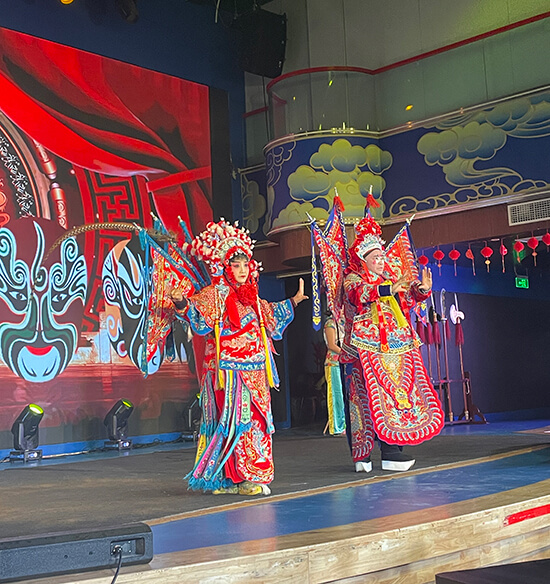
Of historical importance too is this city, founded 4,000 years ago according to ancient accounts. In the modern era, it became the place (together with Sichuan province) where many patriots joined the revolutionary party of Sun Yat-sen. Later, the communists headed by Mao took over the country and the Nationalists, led by Chiang Kai-shek, fled to Taiwan.
Today, it is a quirky juxtaposition of the ancient and modern, such as the famous structure Hongyadong which is built by the river and gloriously lit up at night. Honyadong, the inspiration for the Ghibli movie Spirited Away, is now filled with shops and stands next to a modern bridge and futuristic buildings on both sides that are also brilliantly illuminated with colorful lights (some of which depict Chinese symbols like flowers).
Chongqing takes you to both the future with Liberation Square, home to the upscale shopping district Jifanbei, then back again to the past with Ciquiko Ancient Village which is best visited at night to again see it lit up brilliantly. Chongqing is a city that deserves to be savored and delighted by over a period of days. Where else can you find gas stations and parking lots on top of buildings situated alongside mountain roads?

It was also here that we watched a Sichuan opera highlighted by the famous face-changing routine of handsome male actors. A sleight-of-hand maneuver, where colorful face masks are changed in the blink of an eye, it stands out in an exemplary show of dances, comedy skits, and amazing acrobatics.
The sumptuous meals featured variations on the Sichuan lauriat we had been enjoying, with delicious veggie and pork dishes and spicy seafood soups. One five-diamond restaurant, the diamonds being like Michelin stars, offered to other diners an array of live seafood which included pig-nosed turtles!
The landmark Liberation Square is bounded by big designer stores and shopping buildings where every escalator takes you up to another floor filled with smart, local Chinese fashion shops just like Shibuya 101 in Tokyo. We had Kazumi Go, formerly COO of SM Chongqing, to thank for pointing out good places to shop for clothes. Robinson’s Galleria Chongqing is where we had lunch and shopped at chic yet relatively inexpensive (outfits from Y100 and up) boutiques. That beats shopping in Manila’s mid-range stores any time!
The next morning we took another bullet train, this time to Hunan province, to Huaihua where gorgeous ancient towns and more stunning nature and futuristic technology awaited us.


